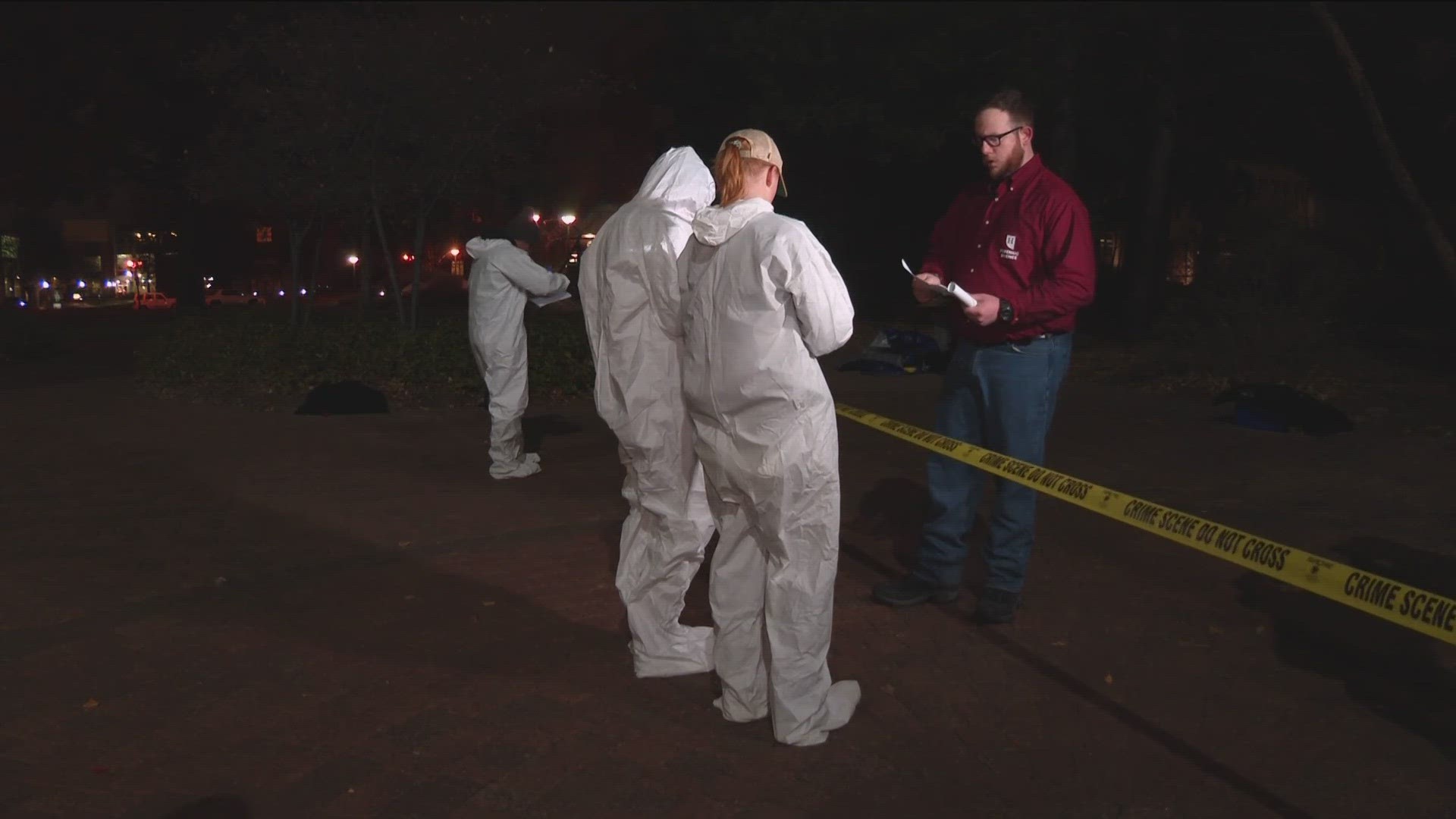ST PAUL, Minnesota — It's the middle of the night at Hamline University. The Blue Garden is surrounded by crime tape.
"I was called at about... 1:30," said Hailee Aro, a senior majoring in biology and forensic science.
Nearby, another student is on the phone with a classmate who had already missed five calls.
These students — all part of Hamline's Crime Scene and Death Investigation course — had no idea they would be gathering at 1:30 a.m. on Tuesday.
Jamie Spaulding, program director of forensic science and assistant professor at Hamline University, said students only knew that some time this week they would be participating in the "After-Hours Crime Scene." But the time and place weren't disclosed.
"What we're trying to do is best simulate, as close as we possibly can, the real world challenges that they would face in this. As we know, your typical class time at 8 or 9 o'clock in the morning isn't when all crimes occur," Spaulding said.
For the practical, Spaulding served as the initial responding officer. Fourteen students were broken into two groups to investigate two different crime scenes. Both of the scenarios involved witnesses hearing gun shots with two victims (mannequins) on the scene. Students then had witnesses to interview, evidence to gather and media to answer to.
When KARE 11 asked one student what was happening, the response was, "I'm not free to comment as we're still investigating."
At one point, a group of fraternity brothers thought they recognized the victim as one of their pledges and jumped the crime scene tape before students stopped them. Another outside factor was having to deal with drizzle on the scene.
"Trying to simulate practice as best we possibly can because if we're able to do that, this is where they get to make mistakes," Spaulding said.
Hamline is the only Minnesota university with a forensic science major and it's one of the few forensics programs in the Upper Midwest.
Their program has about 90 students with 60 majors and 30 minors to choose from.
There is also a crime lab house on Holton Street that's used for more hands-on experience.
Students will now author a full report on the scene but Spaulding will not tell them what exactly happened.
"In terms of whether or not they get it correct, no. That is the hardest thing transitioning from academia into the field is there is no longer a feedback mechanism. Guilty is by no means a barometer of getting it right. That's not a measure of accuracy for any investigator," Spaulding said. "In the field, we're never going to know whether we're right or wrong. It's a hard lesson for students. It really is."
WATCH MORE ON KARE 11+
Download the free KARE 11+ app for Roku, Fire TV, Apple TV and other smart TV platforms to watch more from KARE 11 anytime! The KARE 11+ app includes live streams of all of KARE 11's newscasts. You'll also find on-demand replays of newscasts; the latest from KARE 11 Investigates, Breaking the News and the Land of 10,000 Stories; exclusive programs like Verify and HeartThreads; and Minnesota sports talk from our partners at Locked On Minnesota.
- Add KARE 11+ on Roku here or by searching for KARE 11 in the Roku Channel Store.
- Add KARE 11+ on Fire TV here or by searching for KARE 11 in the Amazon App Store.
- Learn more about the KARE 11+ app for Apple TV in the Apple App Store.
- Learn more about KARE 11+ here.
Watch more local news:
Watch the latest local news from the Twin Cities and across Minnesota in our YouTube playlist:

